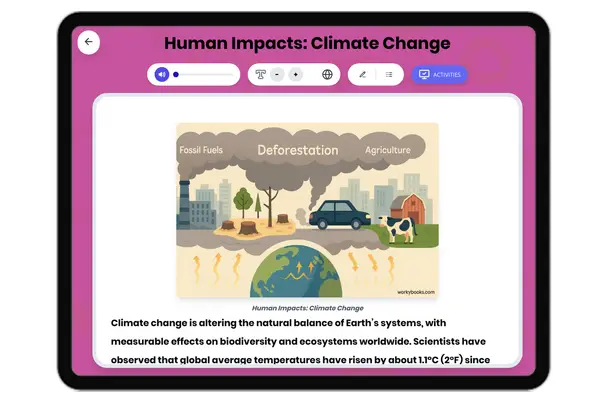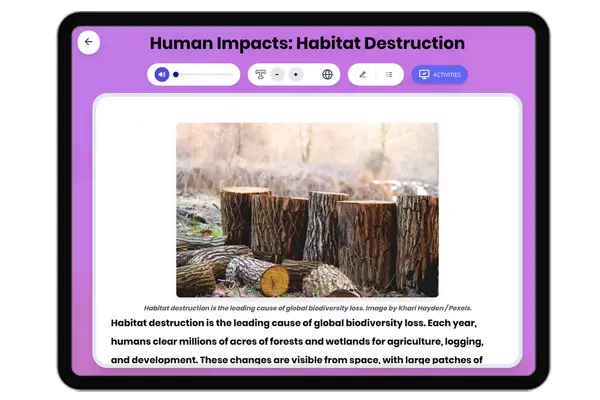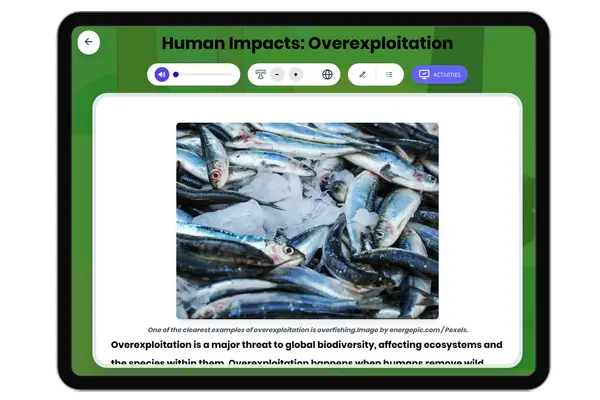Human Impacts: Pollution — Reading Comprehension
Premium Resource
Grades
- 5
- 6
- 7
- 8
Standards
- MS-LS2-4
- MS-ESS3-3
PRINT+DIGITAL RESOURCE
This learning resource is available in interactive and printable formats. The interactive worksheet can be played online and assigned to students. The Printable PDF version can be downloaded and printed for completion by hand.
About This Reader
This middle school science reading passage, aligned with NGSS standards MS-LS2-4 and MS-ESS3-3, examines the mechanisms and effects of human-caused pollution on ecosystems. Students will learn how water pollution from agricultural runoff, industrial waste, sewage, and plastic affects aquatic environments, leading to phenomena like eutrophication and dead zones. The text also covers air pollution, including acid rain and smog, and highlights soil contamination from pesticides and heavy metals. The concept of plastic pollution, including ocean gyres and microplastics, is explored, as well as the processes of bioaccumulation and biomagnification. The passage integrates scientific thinking, cause-and-effect relationships, and real-world implications, making it ideal for grades 6-8. Activities include comprehension questions, writing prompts, and graphic organizers, with audio integration for accessibility. This resource supports science literacy and critical thinking about environmental issues.
Perfect For:
👩🏫 Teachers
- • Reading comprehension practice
- • Auto-graded assessments
- • Literacy skill development
👨👩👧👦 Parents
- • Reading practice at home
- • Comprehension improvement
- • Educational reading time
🏠 Homeschoolers
- • Reading curriculum support
- • Independent reading practice
- • Progress monitoring
Reading Features:
📖
Reading Passage
Engaging fiction or nonfiction text
❓
Comprehension Quiz
Auto-graded questions
📊
Instant Feedback
Immediate results and scoring
📄
Printable Version
Download for offline reading
🔊
Read Aloud
Voice-over with word highlighting





















